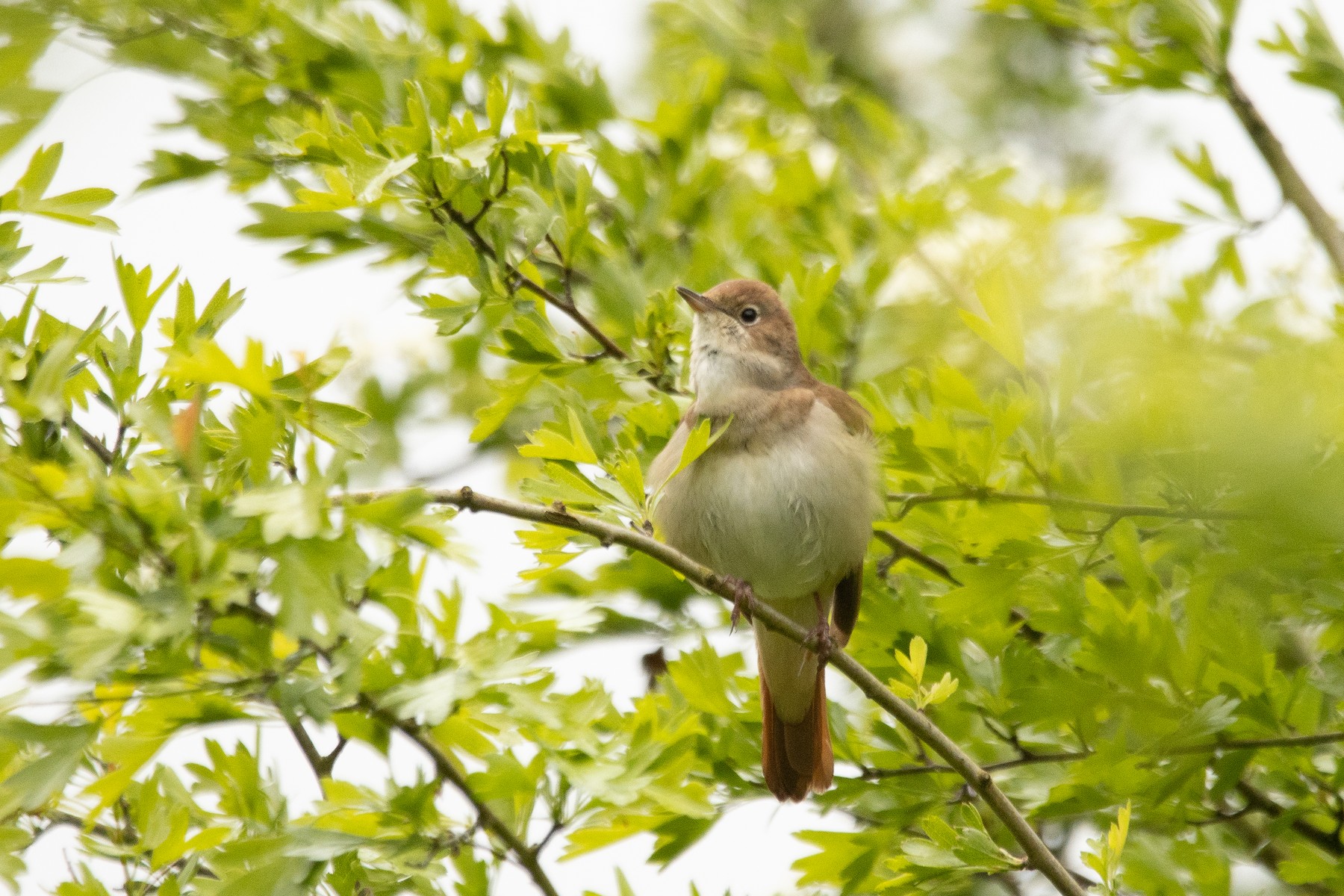Family: Muscicapidae
Genus: Luscinia
A plain brown bird with a pale eyering and rusty-brown tail, best known for its rich, powerful song which can keep people awake when given at night. In areas of overlap, compare with extremely similar Thrush Nightingale; note present species’ unmarked pale underparts, often with a variable buffy wash, as well as its warmer-toned back and brighter rufous tail. Song is extremely variable, and can include whistles, trills, rattles, and warbled phrases; elements often repeated. Calls include a very difficult-to-locate “teek”, low rattles, and harsh rasping calls. Found in varied wooded and scrubby habitats, typically with shady understory. Winters in similarly varied tangled habitats. Typically rather shy and elusive.
Photo: Look how gorgeous [myshortcode]
Description [myshortcode]

In Western Europe, the common nightingale’s range includes countries such as the United Kingdom, France, and Spain, with populations increasingly found in urban parks and gardens. In Central Asia, its range extends through countries like Turkey, Iran, and Afghanistan, and it can also be found in the Caucasus region. In China, the common nightingale can be found in various parts of the country, including the northeastern regions and the Tibetan Plateau.
During the breeding season, the male common nightingale sings to attract a mate and establish his territory. Its complex and melodic song has made it a popular subject of folklore and literature, often associated with love and longing. The common nightingale is a migratory species, spending the winter months in sub-Saharan Africa, before returning to its breeding grounds in Europe and Asia during the spring.
The common nightingale is a small, unassuming bird, with a plain brown plumage that provides excellent camouflage in its preferred habitats. It has a relatively long, straight bill, which it uses to catch insects and worms from the ground. Despite its unremarkable appearance, the common nightingale’s song has earned it a special place in human culture, and it remains a beloved symbol of the arrival of spring and the beauty of the natural world.





